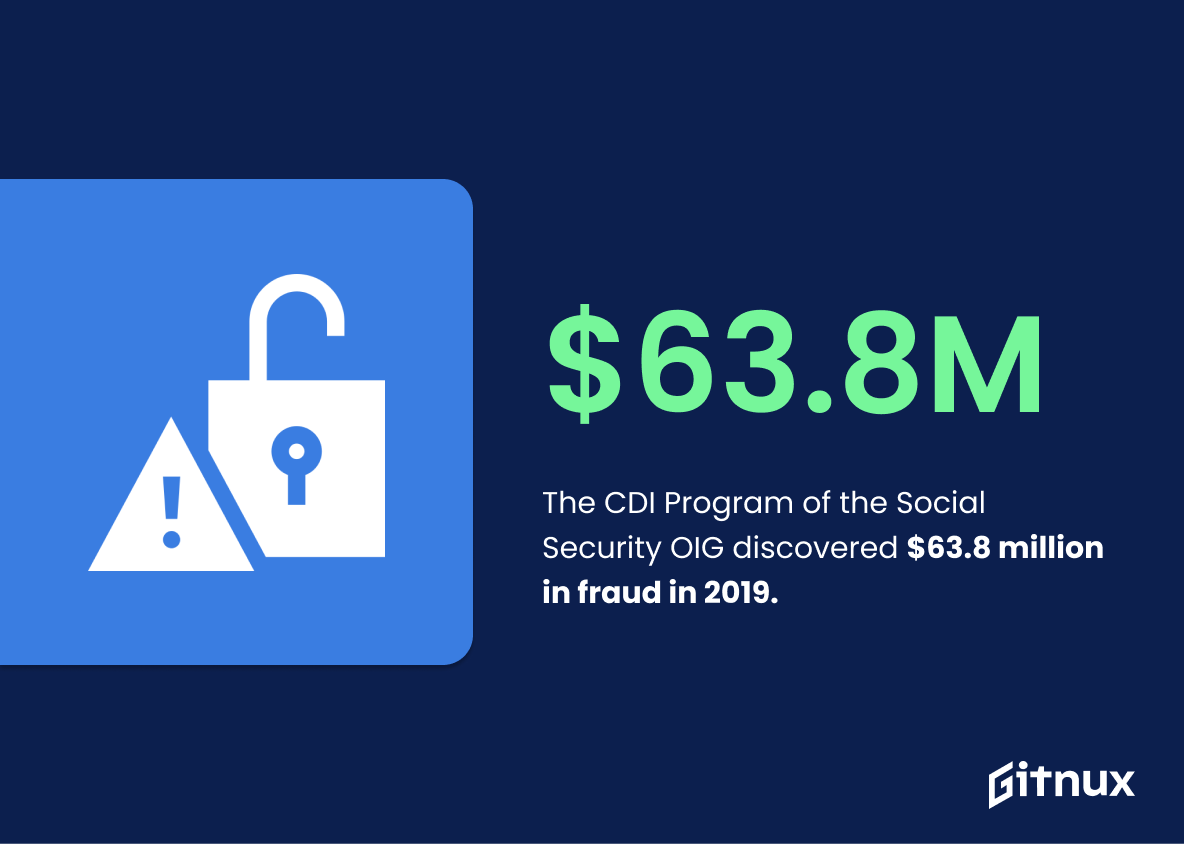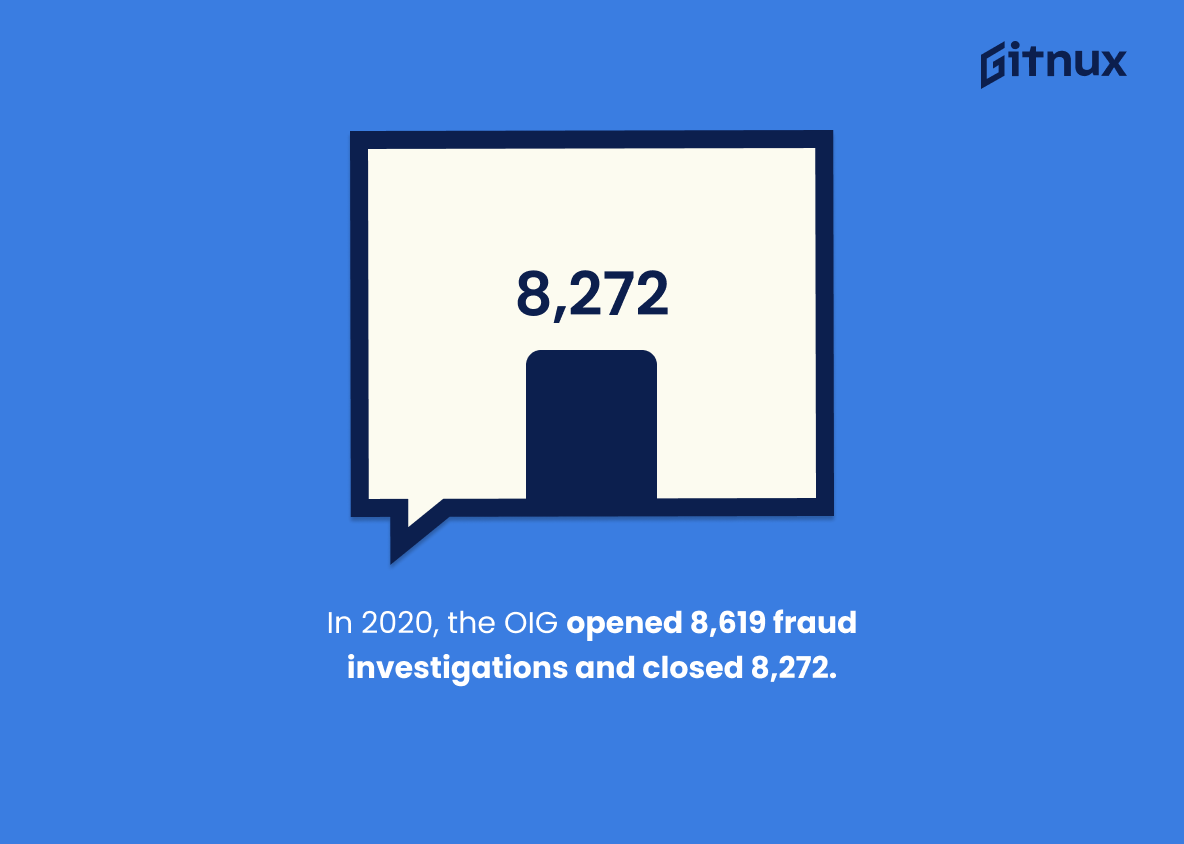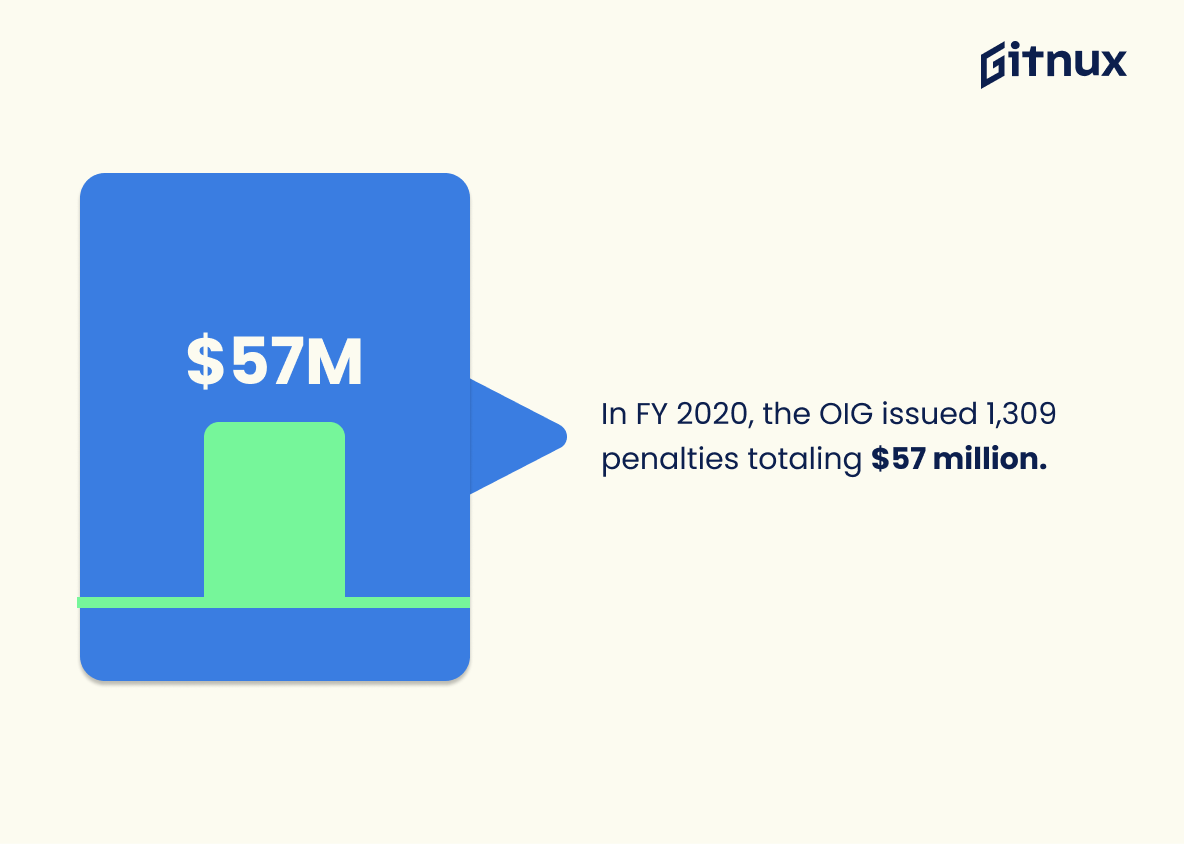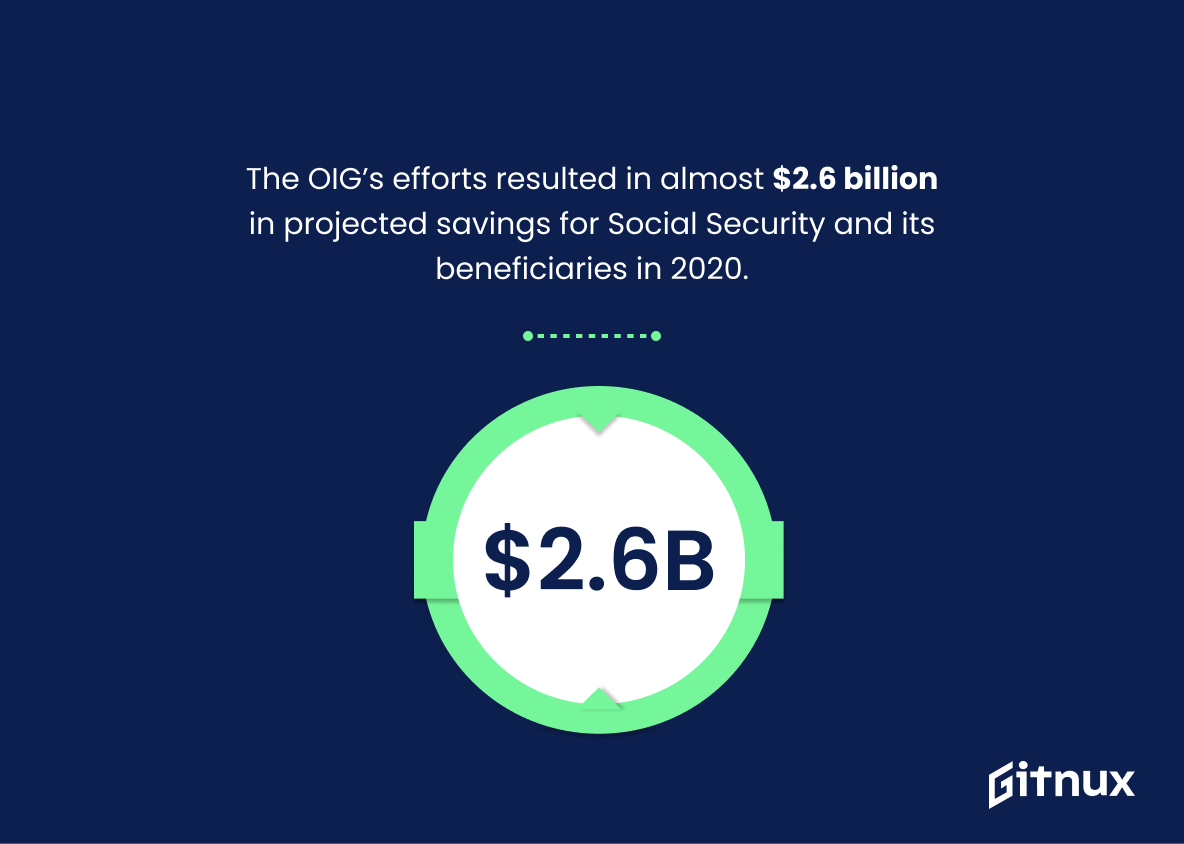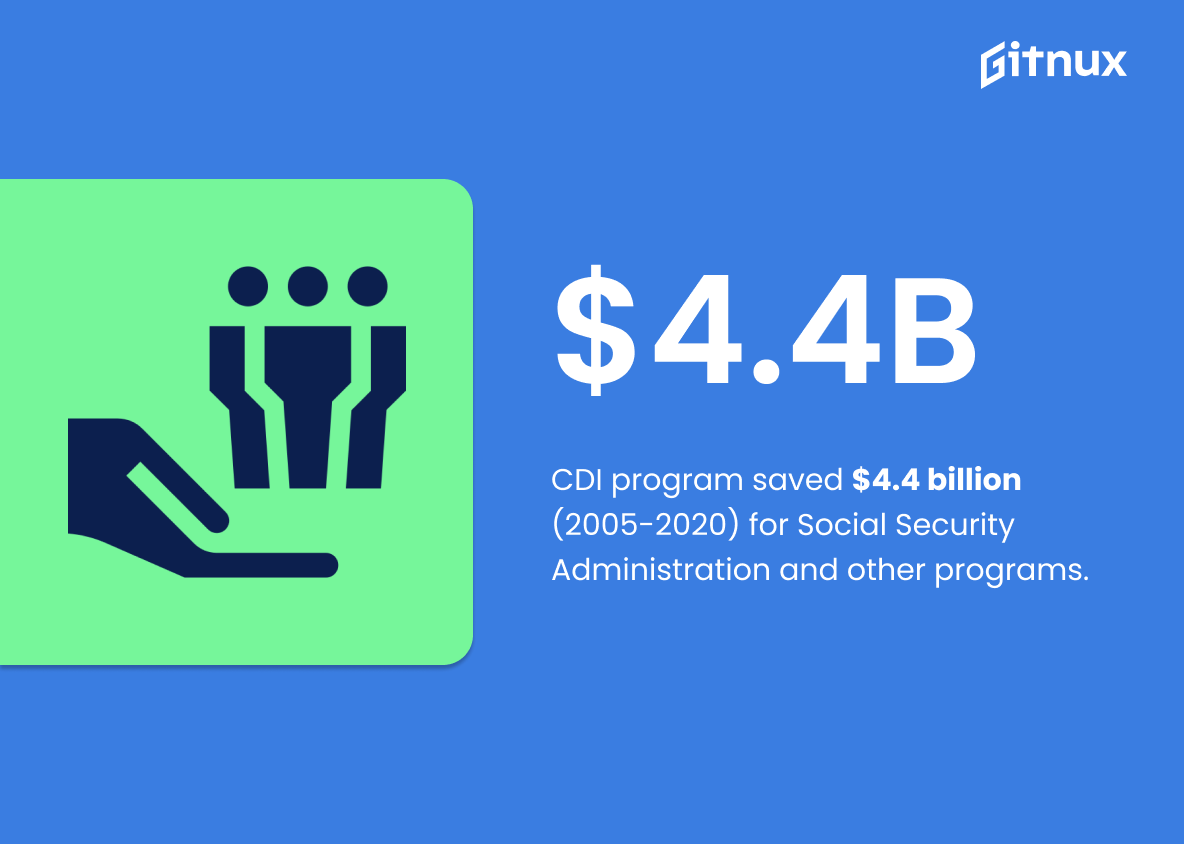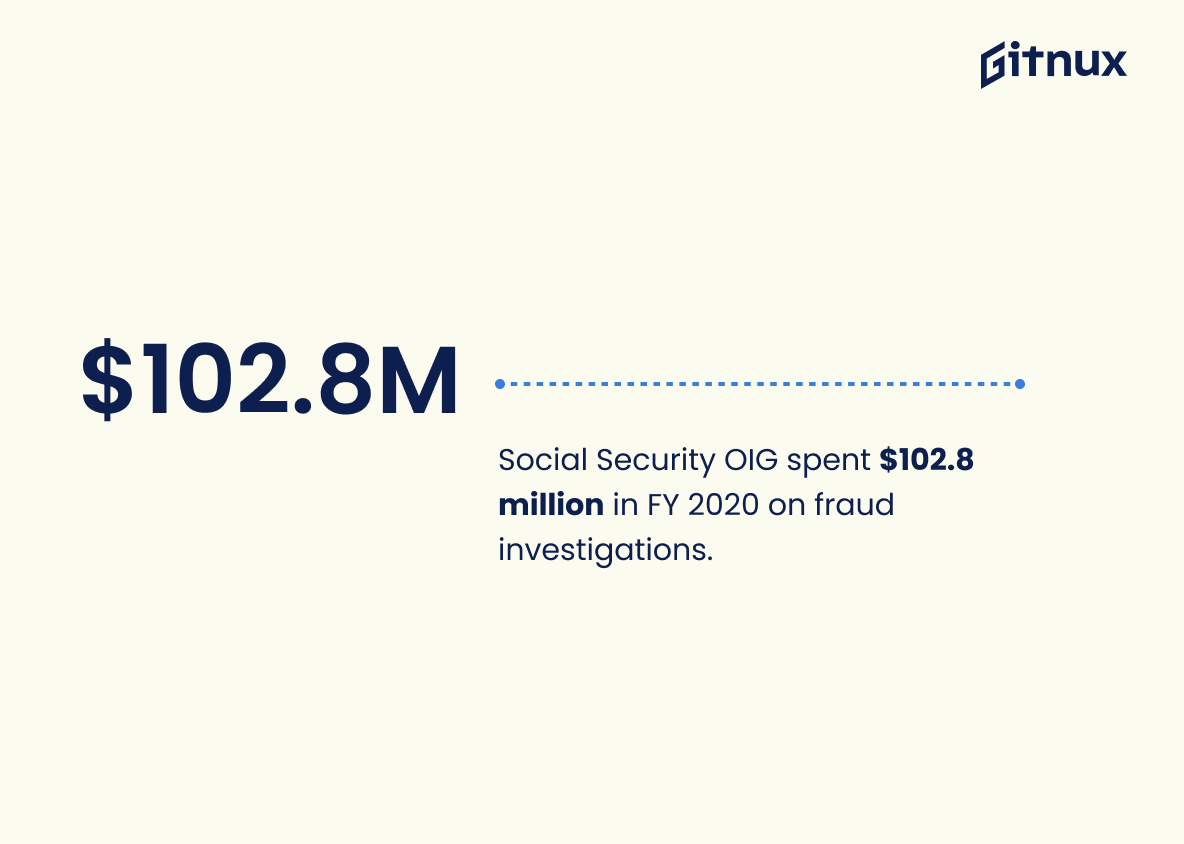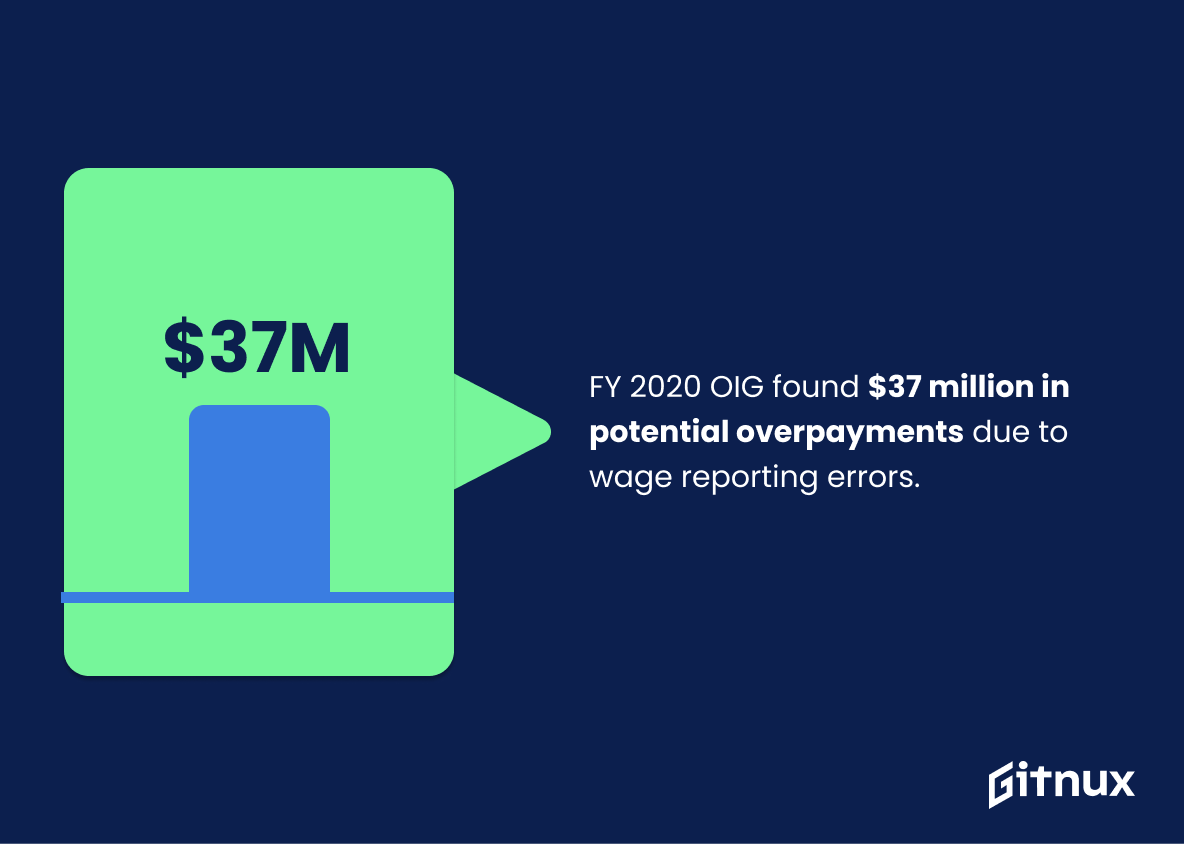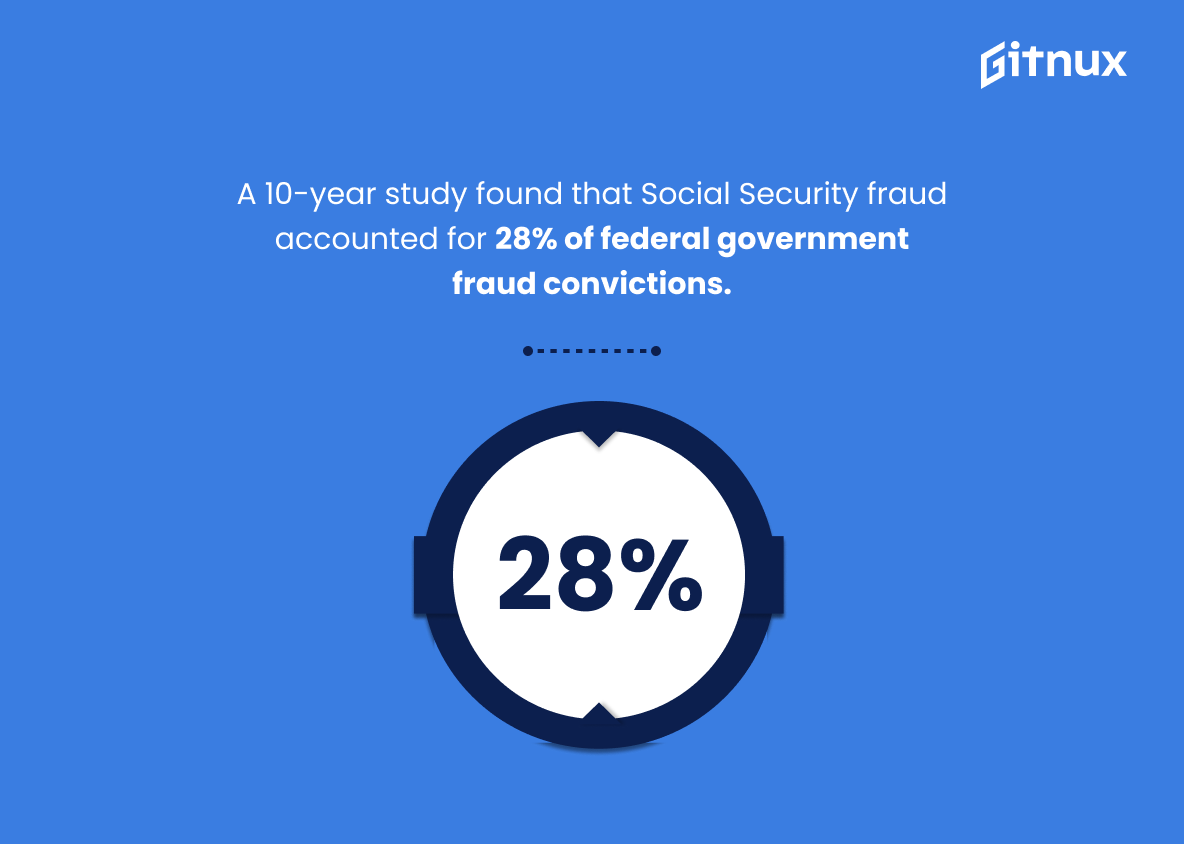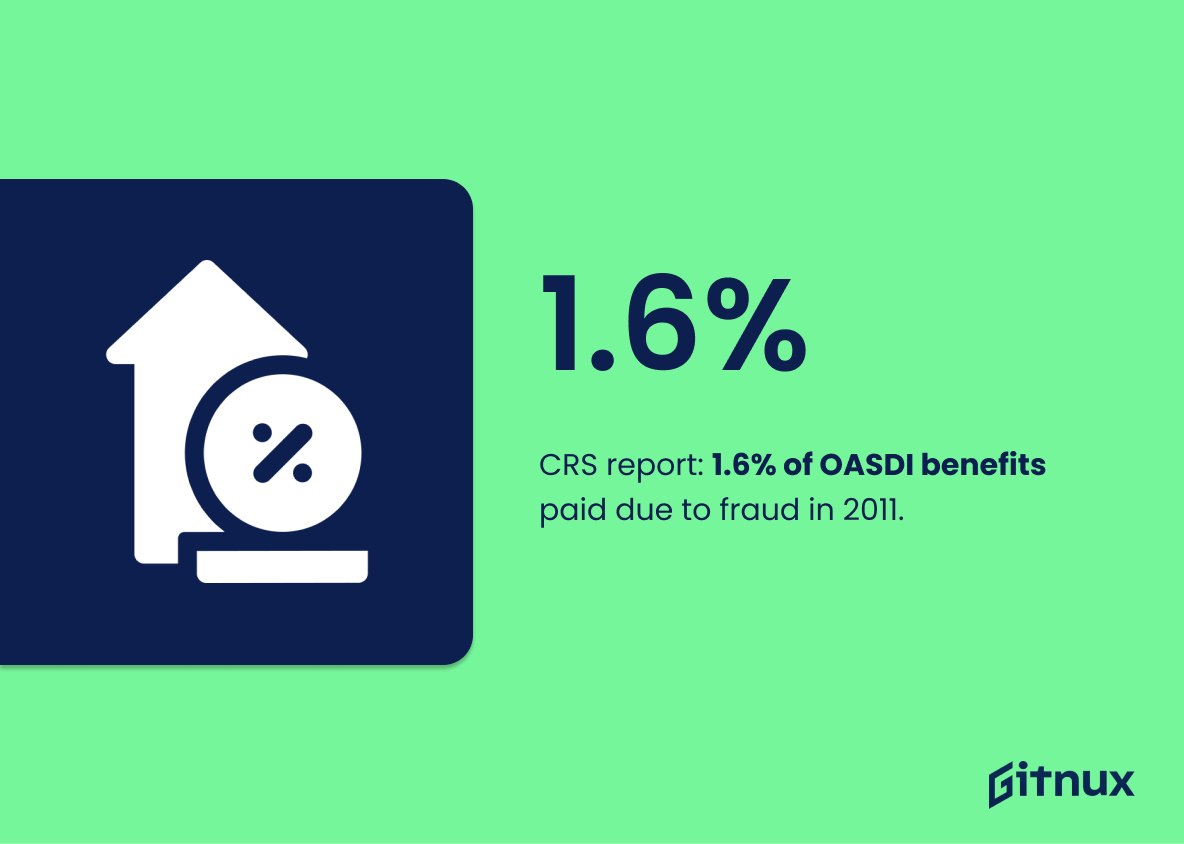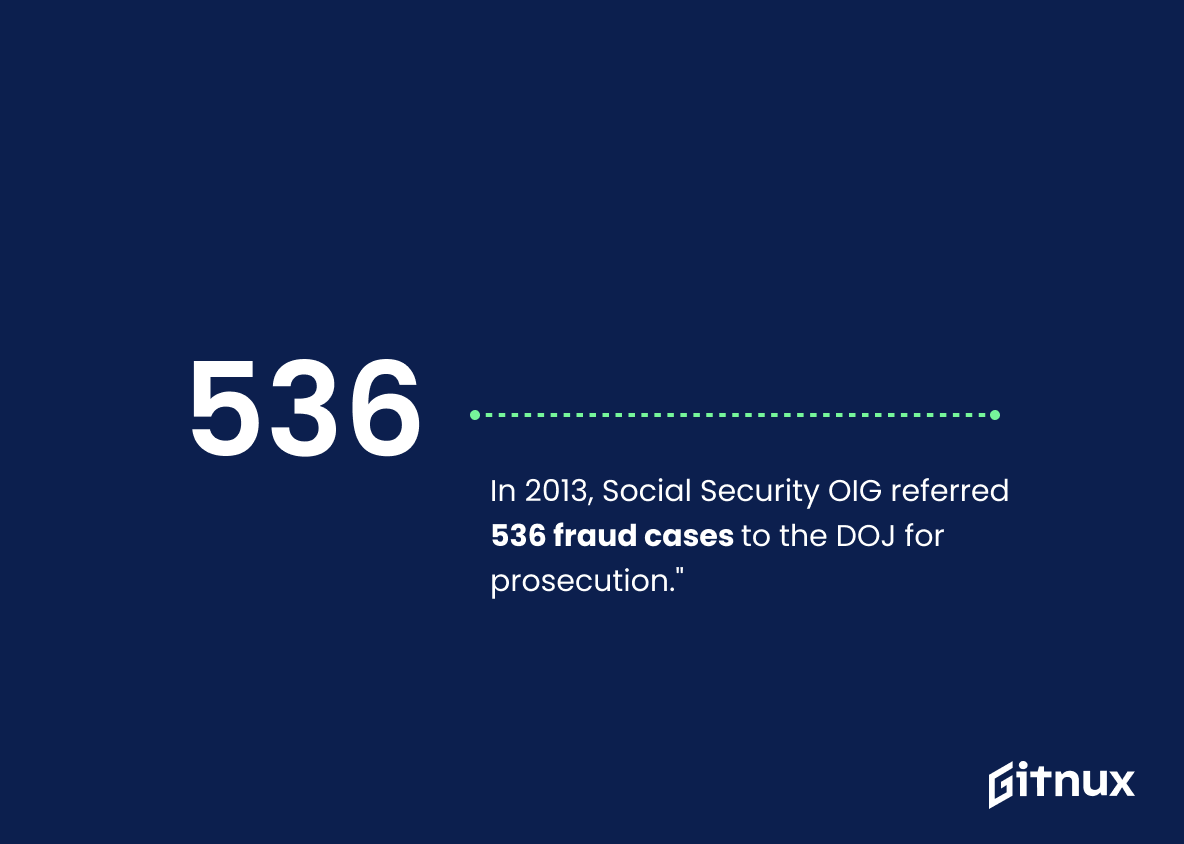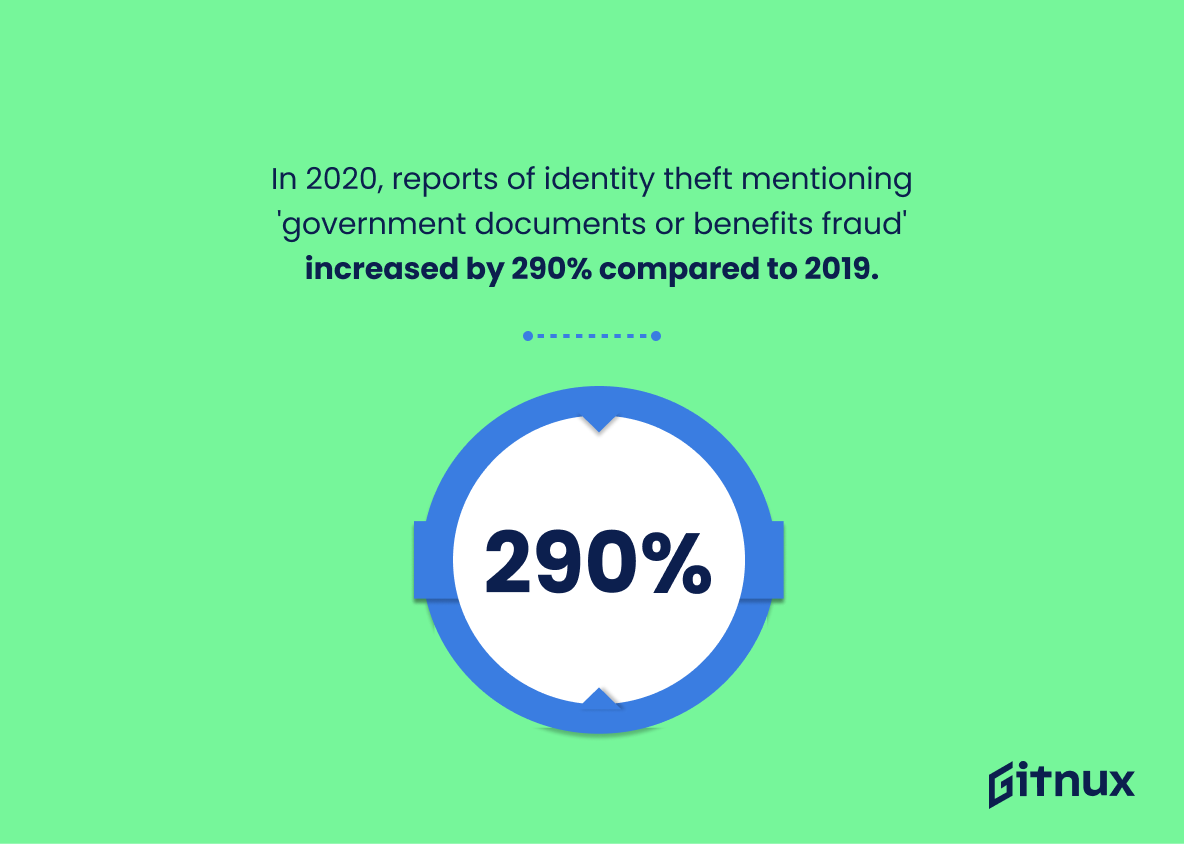The Social Security Administration (SSA) and its Office of the Inspector General (OIG) are dedicated to preventing fraud in the Social Security system. In 2020, they detected $183 million in fraudulent activity related to Social Security benefits. The OIG received over 325,000 allegations of fraud that year and opened 8,619 investigations while making 460 arrests and executing 104 search warrants. They also issued 1,309 criminal and civil monetary penalties totaling more than $57 million for those found guilty of committing fraud against the SSA or its beneficiaries.
In addition to these efforts by law enforcement agencies, the Cooperative Disability Investigations (CDI) Program has been instrumental in uncovering potential cases of abuse since 1997. This program identified around $63.8 million worth of fraudulent claims in 2019 alone as well as almost $2 billion projected savings for both federal programs like Medicare/Medicaid as well as state-level initiatives such as Temporary Assistance for Needy Families (TANF). Over a 10-year period from 2005–2020 this program saved an estimated total amount exceeding 4 billion dollars.
Unfortunately identity theft is still a major issue when it comes to protecting social security numbers with reports showing that nearly 11 million U.S residents had their SSN exposed due data breaches back 2017; furthermore according FTC’s Consumer Sentinel Network Data Book report there was 290% increase on government documents or benefit’s related identity thefts between 2019 & 2020 respectively . It is clear why prevention measures must be taken seriously if we want our most vulnerable citizens protected from financial exploitation through social security scams & schemes which accounted 28% out all federal government convictions during past decade according study conducted by US Government Accountability Office(GAO).
This statistic is a stark reminder of the prevalence of Social Security fraud in 2020. It highlights the need for vigilance and proactive measures to protect Social Security funds from being misused. It also serves as a warning to those who may be considering taking advantage of the system, as the SSA is actively monitoring and detecting fraudulent activity.
The Social Security Administration’s Office of the Inspector General (OIG) received over 325,000 fraud allegations in 2020.
This statistic is a stark reminder of the prevalence of Social Security fraud in 2020. It highlights the need for increased vigilance and enforcement to protect the integrity of the Social Security system. It also serves as a warning to those who may be considering engaging in fraudulent activities, as the OIG is actively monitoring and investigating such allegations.
Social Security Fraud Statistics Overview
The Social Security OIG’s Cooperative Disability Investigations (CDI) Program uncovered around $63.8 million in Social Security fraud in 2019.
This statistic is a powerful reminder of the importance of the Social Security OIG’s Cooperative Disability Investigations (CDI) Program in combating Social Security fraud. It highlights the success of the program in uncovering and preventing fraudulent activity, and serves as a warning to those who would attempt to defraud the system. The $63.8 million in fraud uncovered in 2019 is a stark reminder of the need for vigilance in protecting Social Security funds.
In 2020, the OIG opened 8,619 fraud investigations and closed 8,272.
This statistic is a powerful indicator of the prevalence of Social Security fraud in 2020. It shows that the Office of the Inspector General (OIG) was actively pursuing investigations into fraudulent activity, and that the number of cases opened was greater than the number of cases closed. This suggests that the OIG was able to identify and investigate a significant number of fraudulent activities, and that the problem of Social Security fraud is still a major concern.
The Social Security OIG made 460 arrests and executed 104 search warrants in 2020.
This statistic is a powerful reminder of the importance of combating Social Security fraud. It shows that the Social Security OIG is actively working to protect the integrity of the Social Security system and is taking decisive action against those who would seek to exploit it. The number of arrests and search warrants executed in 2020 is a testament to the commitment of the OIG to ensuring that Social Security funds are used for their intended purpose.
In Fiscal Year 2020, the OIG issued 1,309 criminal and civil monetary penalties (CMP) totaling over $57 million.
This statistic is a stark reminder of the consequences of Social Security fraud. It shows that the Office of the Inspector General is taking a hard stance against those who attempt to defraud the system, issuing hefty fines and penalties that total over $57 million. This serves as a warning to those who may be tempted to commit fraud, that the consequences are severe and not worth the risk.
The OIG’s efforts resulted in almost $2.6 billion in projected savings for Social Security and its beneficiaries in 2020.
This statistic is a testament to the effectiveness of the OIG’s efforts in combating Social Security fraud. It demonstrates that the OIG is actively working to protect Social Security and its beneficiaries from fraudulent activity, and that their efforts are yielding tangible results. The $2.6 billion in projected savings is a significant amount of money that can be used to improve the lives of Social Security beneficiaries.
Between 2005 and 2020, the CDI program saved the Social Security Administration and other federal and state programs over $4.4 billion.
This statistic is a testament to the success of the CDI program in curbing Social Security fraud. It demonstrates that the program has been effective in protecting the Social Security Administration and other federal and state programs from financial losses, to the tune of over $4.4 billion. This is a significant amount of money that can be used to fund other important initiatives and programs.
In 2019, the OIG’s special agents secured 783 convictions related to Social Security fraud.
This statistic is a powerful reminder of the importance of combating Social Security fraud. It shows that the OIG’s special agents are actively working to protect the integrity of the Social Security system and that their efforts are having a real impact. It also serves as a warning to those who would attempt to defraud the system, that they will be held accountable for their actions.
The Social Security OIG spent approximately $102.8 million in FY 2020 to investigate Social Security fraud.
This statistic serves as a stark reminder of the immense financial resources being devoted to combatting Social Security fraud. It highlights the seriousness with which the Social Security OIG is taking the issue, and the commitment to ensuring that those who are attempting to defraud the system are held accountable.
In FY 2020, the OIG identified nearly $37 million in potential overpayments resulting from wage reporting errors.
This statistic is a stark reminder of the potential financial losses associated with Social Security fraud. It highlights the importance of ensuring accurate wage reporting to avoid costly overpayments and underscores the need for vigilance in preventing fraud.
A 10-year study found that Social Security fraud accounted for 28% of federal government fraud convictions.
This statistic is a stark reminder of the prevalence of Social Security fraud in the federal government. It highlights the need for increased vigilance and enforcement to combat this type of fraud. The fact that it accounted for 28% of federal government fraud convictions over a 10-year period is a clear indication that more needs to be done to protect the Social Security system from abuse.
A Congressional Research Service report estimated that 1.6% of total OASDI (Old-Age, Survivors, and Disability Insurance) benefits were paid as a result of fraud in 2011.
This statistic is a powerful indicator of the prevalence of Social Security fraud in 2011. It demonstrates that, despite the best efforts of the government to prevent it, a significant portion of OASDI benefits were still being misused. This statistic is a stark reminder of the need for continued vigilance in order to protect the integrity of the Social Security system.
Over 64 million Americans received Social Security benefits in 2020, emphasizing the importance of fraud prevention in the program.
This statistic serves as a stark reminder of the sheer number of people relying on Social Security benefits, and the need for fraud prevention to protect them. It highlights the importance of safeguarding the program from fraudulent activity, ensuring that those who rely on it can continue to do so without fear of exploitation.
In 2013, the Social Security OIG referred 536 cases of fraud to the Department of Justice for criminal prosecution.
This statistic is a stark reminder of the prevalence of Social Security fraud. It shows that the Social Security OIG is actively working to identify and prosecute those who are taking advantage of the system. It also serves as a warning to those who may be considering committing fraud: the consequences are real and the penalties are severe.
More than 10.5 million U.S. residents had their Social Security numbers exposed in data breaches in 2017.
This statistic is a stark reminder of the prevalence of Social Security fraud in the United States. It highlights the need for individuals to be vigilant in protecting their personal information, as well as the need for organizations to take steps to ensure the security of their data. The fact that more than 10.5 million people had their Social Security numbers exposed in 2017 is a clear indication that the problem of Social Security fraud is far from solved.
A report found that in 2020, identity theft reports that specifically mentioned “government documents or benefits fraud” increased by 290% compared to 2019.
This statistic is a stark reminder of the alarming rise in government document and benefits fraud in 2020. It serves as a powerful illustration of the need to be vigilant in protecting Social Security information and benefits from fraudulent activity. The 290% increase in identity theft reports is a clear indication that more needs to be done to safeguard Social Security information and benefits from those who would seek to exploit them.
The CDI program has 43 units across 24 states and Puerto Rico, working to identify Social Security fraud.
This statistic is a testament to the importance of the CDI program in combating Social Security fraud. It highlights the breadth of the program’s reach, with units spread across 24 states and Puerto Rico, demonstrating its commitment to identifying and preventing fraudulent activity. This statistic is a powerful reminder of the need for vigilance in protecting Social Security funds.
Since its inception in 1997, the CDI program has investigated 973,000 disability claims and identified over $9 billion in projected savings related to Social Security fraud.
This statistic is a powerful testament to the effectiveness of the CDI program in combating Social Security fraud. It highlights the sheer scale of the problem and the amount of money that has been saved as a result of the program’s efforts. It also serves as a reminder of the importance of continuing to invest in programs like the CDI to ensure that Social Security fraud is kept to a minimum.
In FY 2020, there were 3,640 allegations about fraud specifically related to the Social Security numbers.
This statistic is a stark reminder of the prevalence of Social Security fraud in our society. It highlights the need for increased vigilance and awareness of the potential for fraudulent activity related to Social Security numbers. It also serves as a warning to those who may be vulnerable to such scams, as well as a reminder to take extra precautions when dealing with Social Security numbers.
Conclusion
The statistics presented in this blog post demonstrate the prevalence of Social Security fraud and the efforts taken by the Social Security Administration’s Office of Inspector General (OIG) to combat it. In 2020, OIG detected $183 million in fraudulent activity, received over 325,000 allegations of fraud, opened 8,619 investigations and closed 8,272 cases. The CDI Program uncovered around $63.8 million in Social Security fraud that same year while also saving SSA and other federal programs more than $4.4 billion since 2005. Additionally, OIG issued 1 309 criminal and civil monetary penalties totaling over 57 million dollars as well as 783 convictions related to social security fraud between 2019-2020 alone; all resulting in a projected savings for beneficiaries amounting to almost 2.6 billion dollars during 2020 fiscal year only. It is clear from these figures that identity theft remains an issue with 10 5 million U S residents having their SSN exposed due to data breaches back 2017; however thanks to initiatives such as CDI program which has 43 units across 24 states plus Puerto Rico working hard towards identifying potential threats – we can be sure our benefits are safe.
References
0. – https://www.iii.org
1. – https://www.ftc.gov
2. – https://www.fas.org
3. – https://www.money.cnn.com
4. – https://www.ssa.gov
5. – https://www.justice.gov
6. – https://www.oig.ssa.gov
ZipDo, cited June 2023: Social Security Fraud Statistics
